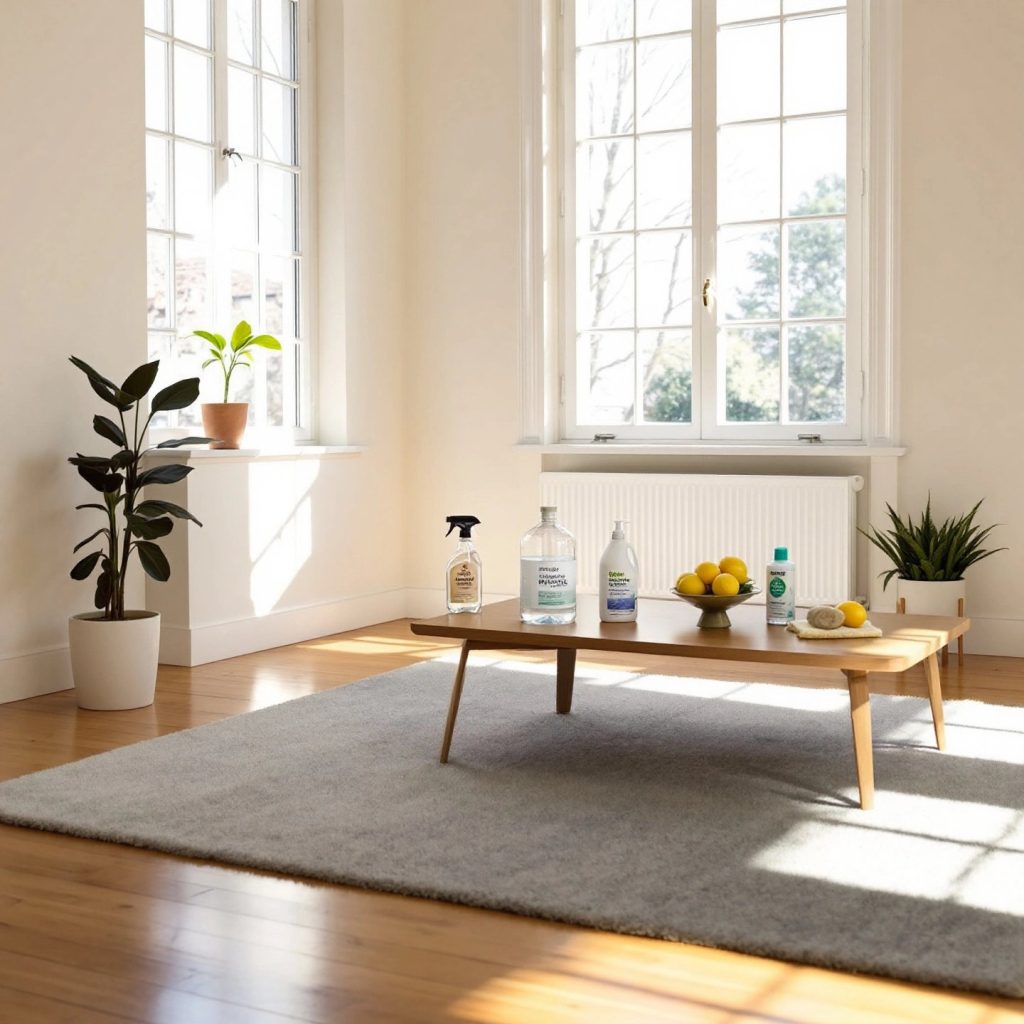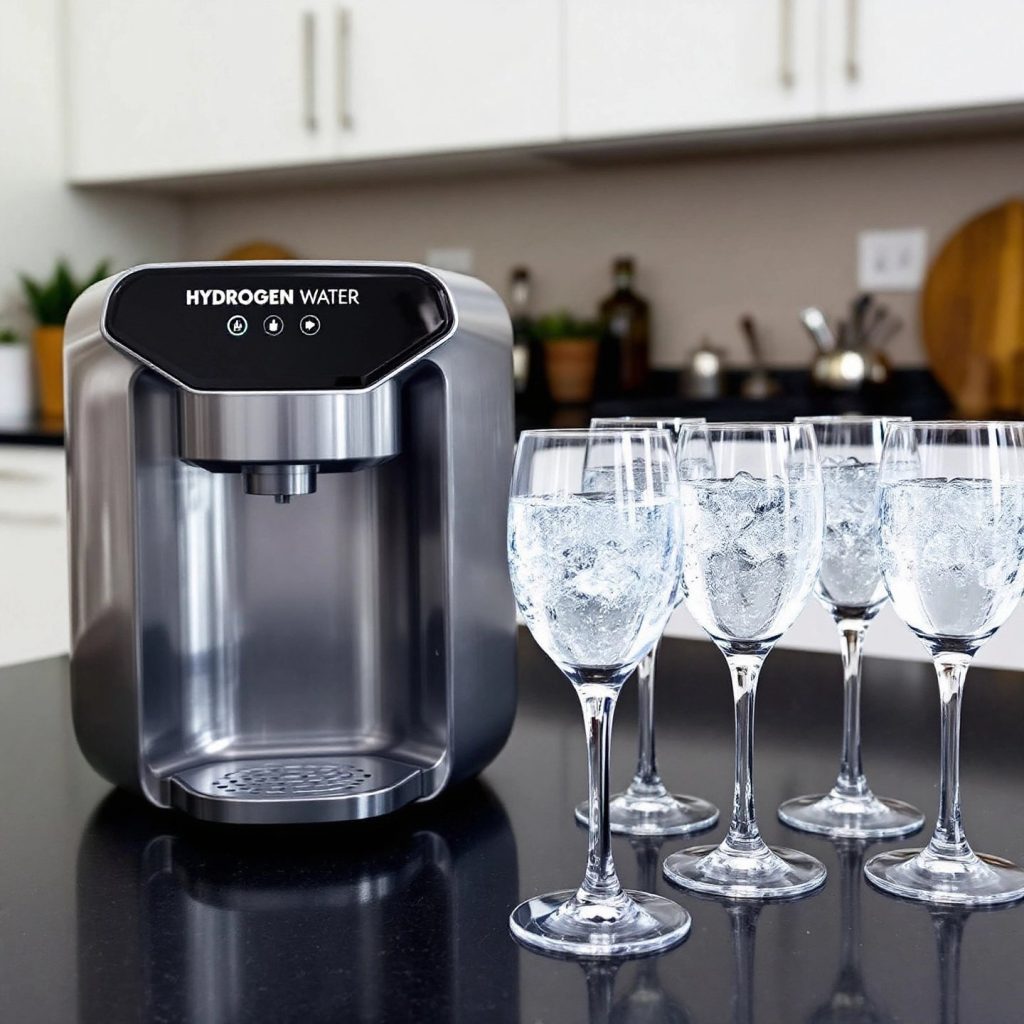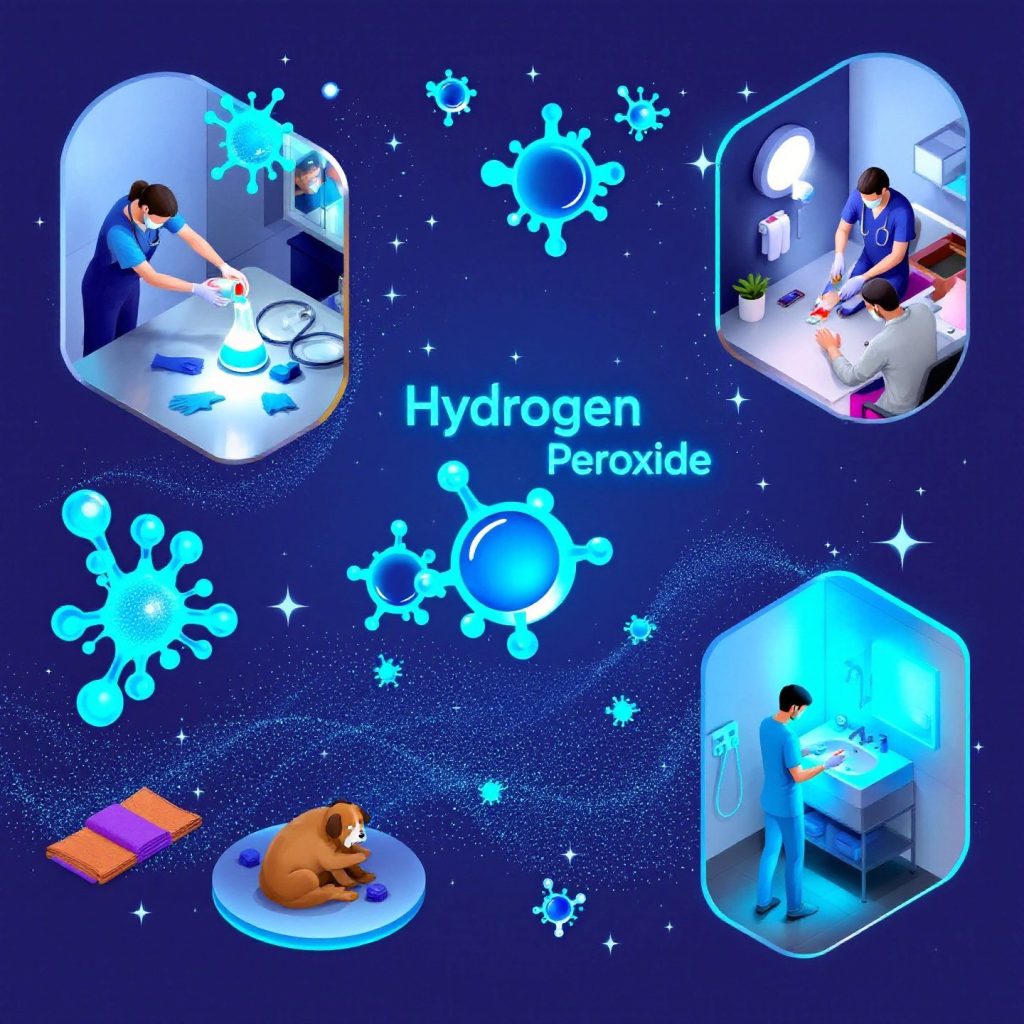Introduction to Does Hydrogen Peroxide Kill Mold
When it comes to maintaining a healthy home, mold is often a silent intruder. Mold is a type of fungus that thrives in moist environments, such as damp basements, leaky roofs, or poorly ventilated bathrooms. It not only poses a threat to your home’s structural integrity but can also lead to various health issues, including respiratory problems and allergic reactions (source). Mold remediation is crucial to ensure a safe living environment, and among the many solutions available, hydrogen peroxide stands out as a potent ally.
Hydrogen peroxide is a common household disinfectant known for its oxidizing properties, which make it effective in breaking down and eliminating mold spores. Unlike harsher chemicals, hydrogen peroxide is non-toxic and safe to use on various non-porous surfaces, making it a preferred choice for many homeowners seeking an eco-friendly mold removal method (source).
This article will explore the efficacy of hydrogen peroxide in mold removal, comparing it with other cleaning agents like vinegar and bleach. We’ll also offer practical tips for preventing mold growth, ensuring your home remains a healthy and safe haven. By understanding how hydrogen peroxide works against mold and learning effective prevention strategies, you’ll be better equipped to tackle mold issues head-on and maintain a mold-free environment.
Understanding Mold and the Role of Hydrogen Peroxide
Mold, a natural part of the environment, plays a vital role outdoors by breaking down organic matter. However, indoors, it becomes a concern when it finds the right conditions to thrive. Mold’s life cycle begins with tiny spores that float invisibly through the air, waiting to land on moist surfaces where they can grow. The key to preventing mold growth lies in moisture control, as mold cannot thrive without it (source).
When it comes to mold remediation, hydrogen peroxide emerges as a highly effective solution. As a powerful oxidizing agent, hydrogen peroxide works by releasing oxygen that breaks down the molecular structure of mold spores, effectively neutralizing them. This bubbling action not only kills mold but also helps lift it from surfaces, making it easier to wipe away. The advantage of using hydrogen peroxide over harsher chemicals like bleach is its non-toxic nature, which makes it safer for both humans and pets (source).
Moreover, hydrogen peroxide is versatile and can be used on a variety of surfaces, including countertops, bathroom tiles, and even in areas with vulnerable materials. Unlike some chemical treatments that leave behind residues or harsh fumes, hydrogen peroxide decomposes into water and oxygen, ensuring a cleaner and safer environment. This makes it a preferred choice for those seeking an eco-friendly approach to mold treatment.
By understanding the life cycle of mold and leveraging the oxidizing power of hydrogen peroxide, homeowners can effectively manage and prevent mold growth. This not only protects the structural integrity of the home but also promotes a healthier living space free from the potential health risks associated with mold exposure.
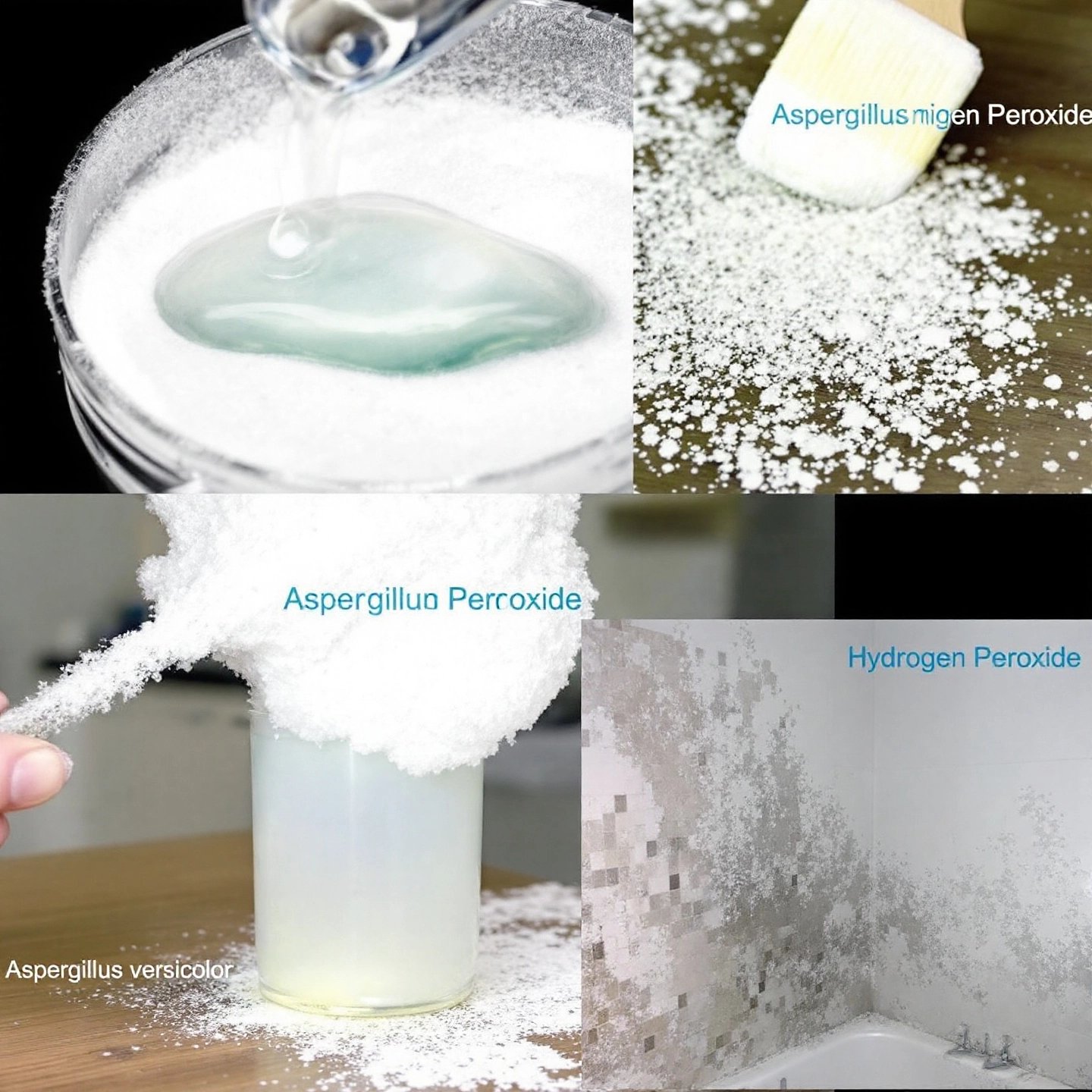
How Hydrogen Peroxide Works Against Different Mold Types
When tackling mold in your home, it’s essential to understand the different types of household mold strains and how hydrogen peroxide interacts with them. Mold can manifest in various forms, each with distinct characteristics and potential health impacts. Fortunately, hydrogen peroxide is a versatile agent that can effectively combat many of these strains through its bubbling action and antimicrobial properties.
Common Household Mold Strains
- Chaetomium: Often found in water-damaged homes, this allergenic mold begins as a fuzzy white growth but can darken over time. Hydrogen peroxide’s oxidizing action can effectively disrupt its growth cycle, making it easier to remove (source).
- Stachybotrys (Black Mold): Known for its toxigenic properties, this mold thrives in damp areas. While professional removal is often recommended, hydrogen peroxide can be used for initial treatment by breaking down surface spores (source).
- Trichoderma: Found in damp soil and indoor environments with organic matter, this toxigenic mold is susceptible to hydrogen peroxide’s antimicrobial effects, which help neutralize its potential health risks.
- Alternaria: Common in bathrooms and around windows, this allergenic mold can trigger allergic reactions. Hydrogen peroxide’s bubbling action can lift mold from surfaces, allowing for thorough cleaning.
- Ulocladium: Typically found in wet areas like showers and appliances, this mold can be effectively managed with hydrogen peroxide, which disrupts its spores and prevents regrowth.
- Aspergillus: A pathogenic mold often found in HVAC systems, it can cause respiratory issues. Hydrogen peroxide can help reduce its presence by oxidizing spores in accessible areas.
- Penicillium: This allergenic mold thrives in moist environments and can be controlled by hydrogen peroxide, which helps eliminate spores and reduce allergen exposure.
Hydrogen peroxide’s effectiveness stems from its ability to release oxygen, which breaks down the cellular structure of mold spores. This not only kills the mold but also aids in lifting it from surfaces, making cleaning more efficient. Its non-toxic nature also means it can be safely used in homes with children and pets, providing an eco-friendly alternative to harsher chemical treatments.
By understanding the specific mold strains in your home and utilizing hydrogen peroxide appropriately, you can maintain a cleaner, healthier environment. This knowledge empowers homeowners to address mold issues proactively, ensuring that their living spaces remain safe and comfortable.
Addressing Black Mold and Other Hazardous Strains
Black mold, often referred to as Stachybotrys chartarum, is notorious for its potential health impacts, particularly on individuals with mold allergies or compromised immune systems. This type of mold thrives in warm, damp environments, making basements, bathrooms, and areas with water damage prime locations for growth (source). While black mold is not necessarily more dangerous than other molds, its presence can lead to respiratory issues, skin irritation, and in severe cases, infections in immunocompromised individuals.
When dealing with black mold and other toxic strains, hydrogen peroxide emerges as a safer alternative to harsh chemicals. Its oxidizing properties allow it to effectively break down mold spores, minimizing health risks associated with exposure. However, it’s crucial to handle hydrogen peroxide with care. As a strong oxidizer, it can react with certain materials and should be used with appropriate safety precautions (source).
Hydrogen Peroxide Safety Tips
- Always wear protective gear, such as gloves and goggles, to prevent skin and eye irritation.
- Use hydrogen peroxide in well-ventilated areas to avoid inhaling vapors.
- Store hydrogen peroxide in a cool, dark place to prevent decomposition and maintain its efficacy.
- Never mix hydrogen peroxide with other cleaning agents, especially those containing ammonia or chlorine, as this can produce harmful gases.
In addition to using hydrogen peroxide for mold remediation, improving home ventilation is crucial in preventing mold growth. Solar-powered ventilation solutions from Renewable Energy Nexus offer an eco-friendly way to enhance airflow and reduce indoor moisture, which is essential for mold prevention. By promoting better air circulation, these systems help maintain a dry environment, making it less conducive for mold to thrive.
Incorporating these strategies not only ensures a safer home environment but also aligns with sustainable practices. By understanding the risks of black mold and employing hydrogen peroxide safely, homeowners can effectively manage mold problems while fostering a healthier living space.
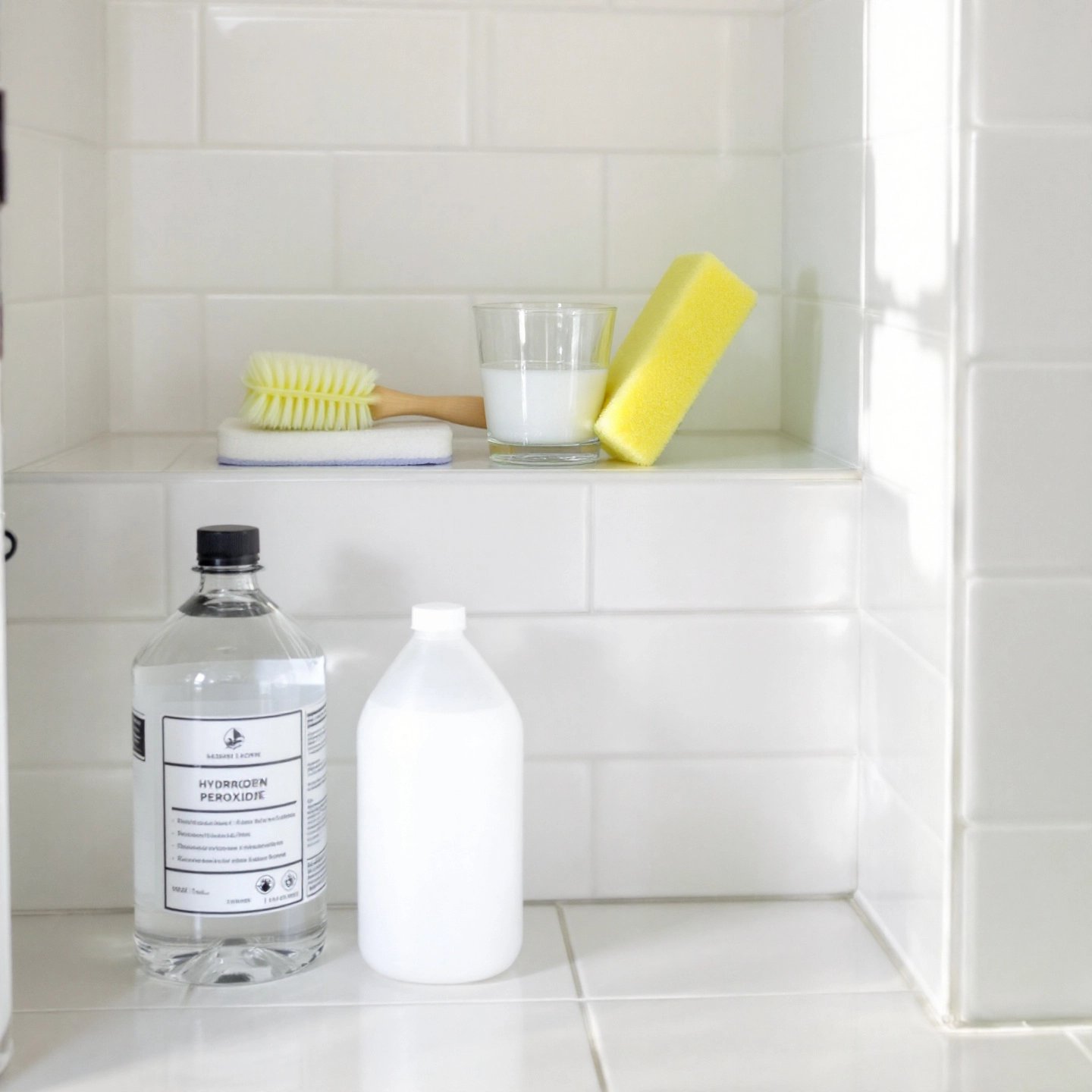
Tackling Mold in Bathrooms and Showers
Bathrooms are notorious for mold growth due to their constant exposure to moisture and humidity. Mold thrives in environments where moisture lingers, and bathrooms, with their frequent water usage and steam, provide the perfect conditions. According to Michael Rubino, a mold and air quality expert, moisture levels above 60% can foster mold growth, making it crucial to manage humidity in these spaces (source).
Hydrogen peroxide is an effective solution for bathroom mold removal due to its ability to kill mold spores and lift them from surfaces. Here’s a step-by-step guide on how to use hydrogen peroxide for shower and bathroom cleaning:
Step-by-Step Hydrogen Peroxide Cleaning Method
- Prepare the Area: Ensure the bathroom is well-ventilated by opening windows or using an exhaust fan. This helps to disperse any fumes and allows the area to dry more quickly.
- Apply Hydrogen Peroxide: Pour 3% hydrogen peroxide into a dark-colored spray bottle to protect it from light, which can degrade its effectiveness. Spray the solution liberally on affected tiles, grout, and other non-porous surfaces.
- Let it Sit: Allow the hydrogen peroxide to sit for at least 10 minutes. This gives it time to penetrate and break down the mold spores effectively (source).
- Scrub the Surfaces: Use a scrub brush or sponge to gently scrub the treated areas, focusing on grout lines and corners where mold tends to accumulate.
- Rinse and Dry: Rinse the surfaces with warm water to remove any residue, then dry thoroughly with a towel to prevent moisture buildup.
Quick Prevention Tips
- Use an exhaust fan during and after showers to reduce humidity levels.
- Wipe down shower walls with a squeegee or towel to remove excess water.
- Hang towels and bath mats to dry completely before reuse.
- Fix any leaks promptly to prevent water accumulation.
- Regularly check and clean grout lines to prevent mold growth.
By incorporating these strategies, you can effectively manage and prevent mold growth in your bathroom. Using hydrogen peroxide not only addresses existing mold but also helps maintain a cleaner, healthier environment. This proactive approach ensures your bathroom remains a safe and pleasant space, free from the hazards associated with mold.
Managing Mold on Clothing and Fabrics
Imagine pulling your favorite sweater out of the closet only to find it speckled with mold. Mold on clothes is not just unsightly; it can also weaken the fabric and pose health risks. But don’t worry, hydrogen peroxide offers an effective solution for fabric mold treatment without causing damage.
Mold thrives on natural fibers like cotton, linen, and wool, which provide the nutrients mold needs to grow. Synthetic fibers, although less susceptible, can still support mold growth if they are soiled or damp (source). Hydrogen peroxide is a gentle oxidizing agent that can be safely used on most washable fabrics, offering a way to tackle mold without resorting to harsh chemicals that might damage delicate materials.
Guidelines for Using Hydrogen Peroxide on Fabrics
- Spot Test First: Before applying hydrogen peroxide, perform a spot test in an inconspicuous area to ensure the fabric’s colorfastness. This step is crucial to prevent discoloration.
- Prepare the Solution: Use a 3% hydrogen peroxide solution, which is commonly available at drugstores. Avoid using higher concentrations as they can damage fibers.
- Apply and Soak: For small mold spots, apply hydrogen peroxide directly to the affected area and let it sit for about 10 minutes. For larger areas or heavily soiled items, submerge the entire garment in a mixture of hydrogen peroxide and water for 15-30 minutes (source).
- Rinse Thoroughly: After soaking, rinse the fabric with cool water to remove any residual peroxide and mold particles.
- Dry Completely: Ensure the fabric is thoroughly dried in a well-ventilated area to prevent mold from returning. Sunlight can also help as it has natural mold-killing properties.
Best Laundry Practices to Prevent Mold
- Regularly clean fabrics, especially those stored in humid areas, to prevent mold growth.
- Use a dehumidifier or air conditioning to maintain indoor humidity below 70%.
- Store clothes in a dry, well-ventilated area, avoiding plastic bags which trap moisture.
- Immediately dry clothes after washing; never leave them damp in the washing machine.
- Consider using breathable garment bags for long-term storage of delicate items.
By following these guidelines, you can effectively manage mold on clothes and maintain the integrity of your fabrics. Hydrogen peroxide not only treats existing mold but also helps prevent future outbreaks, ensuring your wardrobe remains fresh and mold-free.
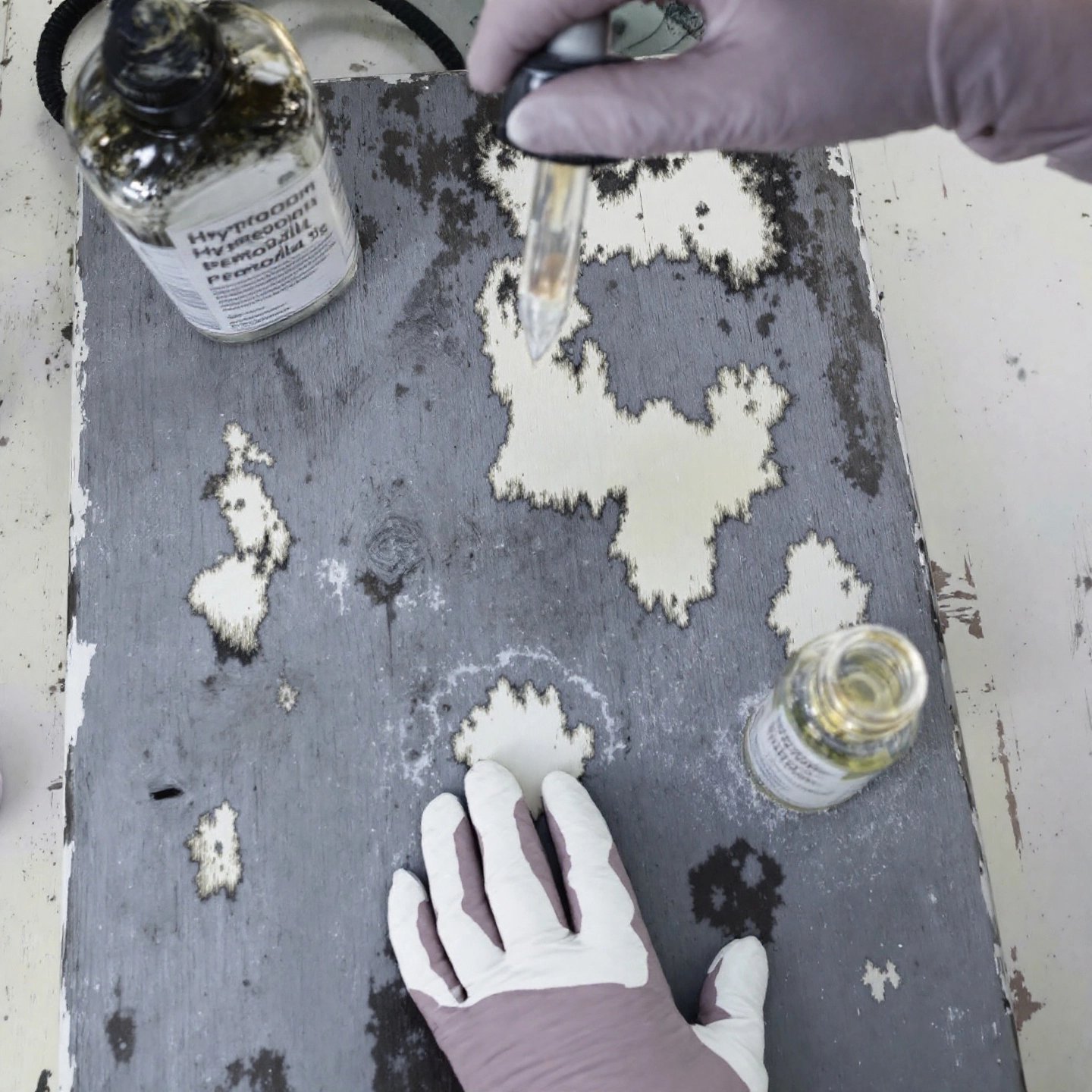
Treating Wood and Porous Surfaces Effectively
When it comes to wood mold treatment and porous surface cleaning, hydrogen peroxide emerges as a gentle yet effective solution. Porous materials, such as wood, drywall, and grout, can be challenging to clean because mold spores can penetrate deeply into their structures. This not only compromises the material’s durability but also poses significant health risks.
Hydrogen peroxide, with its oxidizing properties, can penetrate these surfaces and disrupt mold at its core. Here’s how you can effectively use hydrogen peroxide to treat mold on wood and other porous surfaces:
Step-by-Step Guide for Wood Mold Treatment
- Assess the Damage: Before treatment, evaluate the extent of mold growth. For severe infestations, professional help is advisable. For minor mold, hydrogen peroxide can be an effective DIY solution.
- Prepare the Surface: Ensure the wood surface is dry. Use fans or dehumidifiers to eliminate moisture, which is crucial for preventing further mold growth.
- Apply Hydrogen Peroxide: Use a 3% hydrogen peroxide solution. Apply it directly to the moldy area using a spray bottle for even coverage. Allow it to sit for 10-15 minutes, letting it penetrate the wood and break down mold spores.
- Scrub and Rinse: Gently scrub the area with a soft-bristle brush to remove mold residue. Rinse with a damp cloth to remove any remaining peroxide and mold particles.
- Dry Thoroughly: Ensure the wood is completely dry post-treatment to prevent mold from returning. Using a dehumidifier can help maintain a dry environment.
Porous Surface Cleaning Techniques
- Dry the Area: Like wood, other porous surfaces should be completely dry before treatment. This prevents mold spores from spreading during cleaning.
- Vacuum with HEPA Filter: Use a HEPA-filtered vacuum to remove loose mold spores from the surface, containing them and preventing further spread.
- Apply the Solution: For surfaces like concrete or grout, apply hydrogen peroxide using a spray bottle or cloth. Let it sit for 10 minutes to allow the bubbling action to lift mold spores.
- Scrub and Clean: Use a soft brush to scrub the surface gently. Follow up by wiping with a damp cloth to remove any residue.
- Seal the Surface: After cleaning, consider sealing surfaces with an appropriate sealant. This reduces porosity and helps prevent future mold growth.
Hydrogen peroxide is a non-toxic and environmentally friendly option for tackling mold on wood and other porous surfaces. By following these steps, you can effectively manage mold and maintain the integrity of your home materials. This approach not only addresses existing mold but also helps prevent future outbreaks, ensuring a healthier living environment.
Comparing Hydrogen Peroxide with Vinegar and Bleach
When it comes to tackling mold, homeowners often find themselves choosing between hydrogen peroxide, vinegar, and bleach. Each of these cleaning agents has its own strengths and weaknesses, and understanding these can help you make an informed decision for your mold remediation needs.
Effectiveness
Hydrogen peroxide is a powerful oxidizing agent that not only kills mold spores but also helps lift them from surfaces, making it an effective cleaning solution. Its bubbling action ensures that even stubborn mold is dislodged and removed. Vinegar, on the other hand, is mildly acidic and can kill about 82% of mold species, making it a good option for non-toxic cleaning. Bleach is effective at killing surface mold but does not penetrate porous materials, which means it may not eliminate the root of the problem (source).
Cost and Availability
All three agents are readily available and relatively inexpensive. Bleach is the most cost-effective option, often found in most households. Hydrogen peroxide and vinegar are also affordable and can be easily purchased at grocery or drug stores. However, the effectiveness of hydrogen peroxide and vinegar in killing mold could justify their slightly higher cost compared to bleach.
Safety and Environmental Impact
Safety is a crucial consideration when choosing a mold remediation method. Hydrogen peroxide is non-toxic and breaks down into water and oxygen, leaving no harmful residues, making it an environmentally friendly option. Vinegar is also non-toxic and safe for use around children and pets. Bleach, though effective, can release toxic fumes and should be used with caution, especially in poorly ventilated areas. It can also cause skin irritation and damage surfaces if not used properly.
| Cleaning Agent | Effectiveness | Cost | Safety |
|---|---|---|---|
| Hydrogen Peroxide | High, effective on porous surfaces | Moderate | Non-toxic, environmentally friendly |
| Vinegar | Moderate, good for non-toxic cleaning | Low | Non-toxic, safe around children and pets |
| Bleach | High on surface mold, not on porous materials | Low | Toxic fumes, can cause skin irritation |
When choosing a mold removal method, consider the type of mold, the surfaces affected, and your safety priorities. Hydrogen peroxide offers a balanced approach with its high effectiveness and safety profile, making it a preferred choice for many homeowners. As we move forward, understanding these differences will help you maintain a healthier, mold-free home environment.
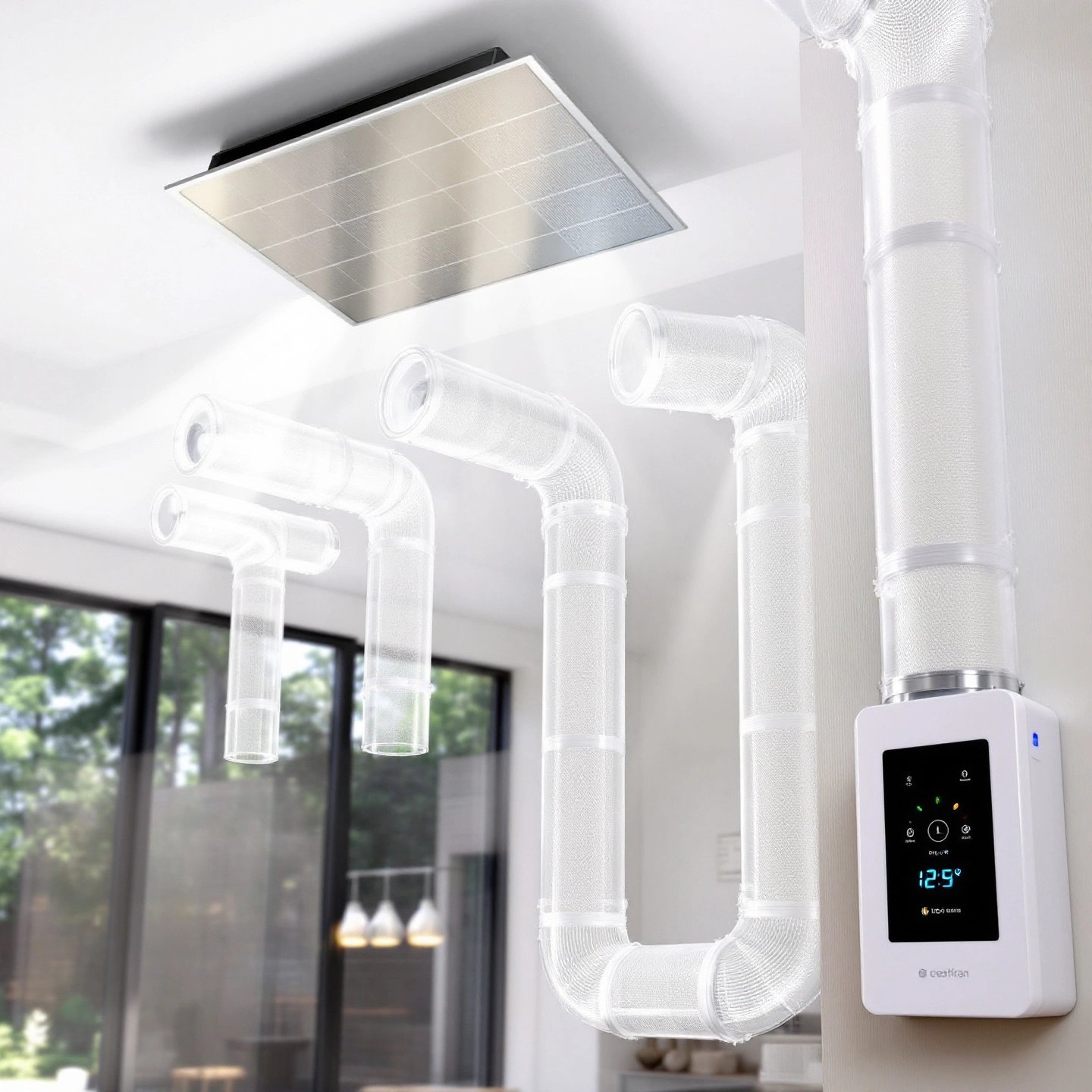
Ensuring Long Term Mold Prevention and Safety
Imagine walking into your home and noticing a musty odor or spotting unsightly mold patches. Sounds concerning, right? Mold prevention is crucial for maintaining a healthy home environment. By adopting effective mold prevention strategies, you can significantly reduce the risk of mold growth and its associated health hazards.
Regular Mold Checks and Maintenance
- Conduct Routine Inspections: Regularly inspect areas prone to moisture, such as basements, bathrooms, and kitchens. Look for signs of water damage or leaks, and address them promptly to prevent mold from taking hold.
- Control Indoor Humidity: Keep indoor humidity levels between 30% and 60% using dehumidifiers or air conditioners. This range is ideal for inhibiting mold growth (source).
- Fix Leaks Immediately: Repair any leaks in roofs, walls, or plumbing as soon as they are detected. Even small leaks can create conditions conducive to mold growth if left unchecked.
- Use Mold-Resistant Products: When renovating or building, consider using mold-resistant drywall and paints, which can provide an extra layer of protection against mold.
Enhancing Ventilation and Airflow
Proper ventilation is key to preventing mold by reducing moisture accumulation. Solar ventilation solutions, like those offered by Renewable Energy Nexus, provide an eco-friendly way to improve airflow and maintain a dry indoor environment.
- Install Solar-Powered Ventilation: Solar attic fans can help circulate air, reducing humidity levels in attics and other areas prone to moisture buildup (source).
- Use Exhaust Fans: Ensure that bathrooms and kitchens are equipped with exhaust fans to remove excess moisture during activities like showering and cooking.
- Promote Natural Airflow: Open windows and doors regularly to allow fresh air to circulate, especially after rain or during high humidity periods.
When to Seek Professional Help
Persistent mold issues may require professional intervention. If mold reappears frequently or covers a large area, consulting with a mold remediation specialist can ensure thorough and effective treatment.
By implementing these strategies, you’ll notice a significant reduction in mold-related problems, contributing to a healthier home environment. Remember, effective mold prevention is an ongoing process, requiring vigilance and proactive measures. As we continue our journey towards a mold-free home, consider integrating sustainable solutions like solar ventilation to enhance indoor air quality while embracing eco-friendly practices.
Conclusion
As we’ve explored throughout this article, hydrogen peroxide emerges as a highly effective agent for mold removal, offering several advantages over traditional cleaning methods. Its oxidizing properties not only help in breaking down mold spores but also ensure a safer, non-toxic environment for your home. This makes hydrogen peroxide an excellent choice for those seeking to maintain a healthy living space without resorting to harsh chemicals.
One of the key benefits of using hydrogen peroxide is its ability to address mold on various surfaces, from non-porous tiles to more delicate fabrics, without causing damage. This versatility, combined with its eco-friendly nature, positions hydrogen peroxide as a preferred solution for homeowners committed to sustainable practices. By incorporating hydrogen peroxide into your regular cleaning routine, you can effectively manage mold issues and contribute to a healthier environment.
However, effective mold management extends beyond just treatment. Consistent prevention strategies are crucial to maintaining a mold-free home. Regular inspections, humidity control, and proper ventilation are essential steps in preventing mold growth. By integrating eco-friendly mold solutions, such as solar-powered ventilation systems from Renewable Energy Nexus, you can enhance airflow and reduce indoor moisture, further safeguarding your home from mold.
In conclusion, hydrogen peroxide not only proves its efficacy in mold removal but also aligns with eco-friendly practices that promote a healthier home. As you continue to tackle mold challenges, consider adopting hydrogen peroxide as part of your cleaning arsenal and embrace sustainable solutions that benefit both your household and the environment. Together, these efforts will ensure a cleaner, safer, and more sustainable living space for you and your family.
Frequently Asked Questions
1. What kills mold better, vinegar or hydrogen peroxide?
Hydrogen peroxide is generally more effective for mold removal due to its oxidizing properties, which break down mold spores more efficiently than vinegar.
2. How long does it take for hydrogen peroxide to kill mold?
Hydrogen peroxide typically takes about 10 to 15 minutes to effectively penetrate and break down mold spores on surfaces.
3. Does hydrogen peroxide kill mold as well as bleach?
Hydrogen peroxide is effective on porous surfaces and is safer, while bleach is potent on non-porous surfaces but can leave toxic residues.
4. Can hydrogen peroxide be used on all surfaces for mold removal?
Hydrogen peroxide is safe for most non-porous surfaces but should be spot-tested on fabrics and wood to prevent discoloration or damage.
5. What are the safety precautions when using hydrogen peroxide for mold removal?
Wear gloves and goggles, ensure good ventilation, and avoid mixing with other chemicals to prevent harmful reactions.

